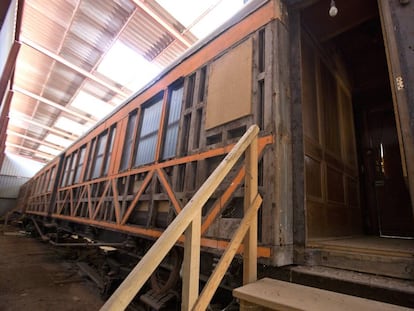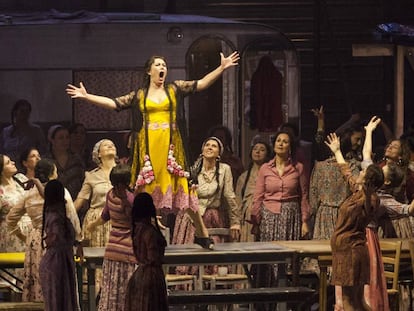Franco¡¯s Masonic photographer
A new book hopes to rescue Camp¨²a¡¯s extensive work from oblivion
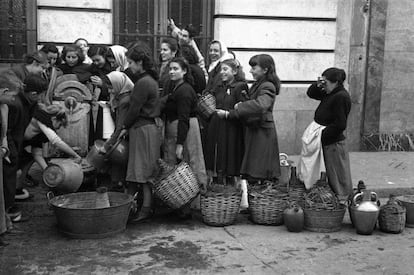

A photographer at ease with his subjects, there was little that escaped Camp¨²a¡¯s lens and his work spanned everyday scenes and episodes of the Civil War as well as pictures of royalty, dignitaries and stars. This bon vivant was also Franco¡¯s chosen portrait photographer. But while he enjoyed periods in the corridors of power, he would also spend time behind bars.
Now a book, compiled by his great grandchild, journalist Cristina Ruiz Fern¨¢ndez and published by La Fabrica, brings us untouched photos and details of his life unknown to his family until recently. We are, of course, speaking about the photographer Camp¨²a Junior, not his father, Jos¨¦ Luis Demar¨ªa L¨®pez, who died in 1936 and, as one of Spain¡¯s photographic pioneers, taught his son much of what he knew.
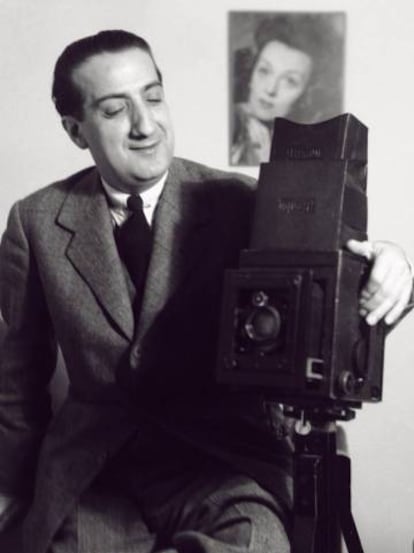
The father had a photography studio in Madrid and accompanied King Alfonso XIII on his trips around Spain, earning him the title of Royal Photographer. He also photographed dignitaries and covered the colonial war in North Africa. But he did not want his son Jos¨¦ to follow in his footsteps, encouraging him instead to become an engineer. As it transpired, however, Jos¨¦ was not cut out for the engineering life.
Something of a character, Jos¨¦ Senior dreamed of fame and fortune and chose the name Capua to represent his brand. He then gave written instructions to the printers to produce business cards bearing this name. The printers, however, misread his writing and produced cards that read Camp¨²a instead. Far from railing at the mistake, Jos¨¦ Senior considered Camp¨²a a fine brand name, as did his son, who went on to use it too.
Once his attempts at engineering failed in the early 1920s, Jos¨¦ Junior set up an agency with another photographer and started to work for his father, who was by then the director of the magazine Mundo. In June 1922, Alfonso XIII was making a trip to Hurdes in Caceres to see for himself the poverty and isolation being suffered in a region representative of much of Spain and Jos¨¦ Junior was picked to accompany him. ¡°It was a very difficult and costly journey so they decided that just one [photographer] should go and share copies of their photos with everyone,¡± explains Ruiz.
Camp¨²a was imprisoned by the Republicans during the Spanish Civil War and then Franco in the 1940s
¡°Those are among Camp¨²a¡¯s best photos,¡± says photo historian Publio L¨®pez Mond¨¦jar, who believes that Camp¨²a¡¯s real strength lay in his ability to forge a bond with the country¡¯s leading figures, including the King, though of course doors were readily opened to him as his Camp¨²a Senior¡¯s son.
The trip produced a photo of the king naked while washing by a stream, earning Camp¨²a a name for himself. ¡°A great friendship emerged between the two men on that trip but Camp¨²a put his health at risk,¡± says Ruiz. Problems with his lungs, exacerbated by a hedonistic lifestyle, led to a spell in a Swiss clinic. According to Ruiz, an alarmed Jos¨¦ Senior consulted Dr. Gregorio Mara?on ¨C who had traveled to Hurdes with the his son and the King ¨C about his son¡¯s health, and apparently received the reply, ¡°Don¡¯t worry. He isn¡¯t going to last long.¡±
The doctor¡¯s prognosis was proven wrong, however, as Camp¨²a Junior went on to live until he was 75, surviving imprisonment by the Republicans during the Spanish Civil War and imprisonment by Franco in the 1940s. Ruiz explains that he was inspired to join the Spanish Falange following a speech by Primo de Rivera. Shortly after the start of the Civil War, the Camp¨²a premises were ransacked and much of the material destroyed ¨C there is little that has survived from Camp¨²a¡¯s early years. ¡°His father was put in a ¡®checa¡¯ [Republican interrogation chamber] and shot in the back as he was being released. This changed the life of his son who was also taken prisoner, but managed to escape,¡± says Ruiz.
Jos¨¦ Junior fled to Alicante where he caught a boat to Marseilles and traveled up towards the Pyrenees to enter Spain afresh on the northern front. He then recorded the advance of Franco¡¯s troops through Bilbao, Oviedo, Teruel, Barcelona and finally Madrid.
Following the war, in which he lost not only his father but also his mother and a sister, Camp¨²a¡¯s work for Franco paid off and he was given the job of organizing the dictator¡¯s movie agenda in El Pardo palace in 1941. But Camp¨²a was harboring a secret that his opponents lost no time in revealing. In 1928, he had become a member of the Masonic lodge known as La Union. It¡¯s easy to imagine Franco¡¯s reaction to this information as he equated Masons with terrorists and communists and would regularly refer to his enemies¡¯ activities as ¡°a Judeo-Masonic conspiracy¡±.
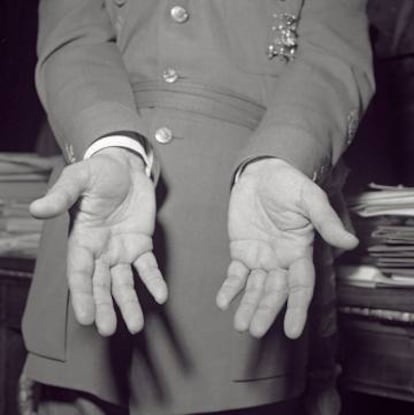
¡°In the Historical Memory Documentary Center [in Salamanca], we found a file that laid out his defense. He claimed that he had been signed up to the lodge by a friend who had described it as a group of men committed to social development and that he had not yet acted upon it,¡± says Ruiz. ¡°My family weren¡¯t aware of this process until recently.¡±
Camp¨²a was sentenced to 12 years and a day in prison but for the second time in his life, he managed to secure a swift release. After just four months behind bars, he was let out on condition he took no political photos. Then, in 1946, he was pardoned. ¡°Franco knew him well, and he was the son of Camp¨²a, an extraordinary photographer. So his sin was forgiven,¡± says L¨®pez Mond¨¦jar.
Subsequently, Camp¨²a threw himself into his work, using different cameras and formats. ¡°He only felt uncomfortable with color,¡± says Ruiz. He loved to go out to photograph processions, a snowfall or a cow on the loose in Madrid. He also opened cinemas in Madrid, which gave him access to celebrities such as Truman Capote, John Huston, Gregory Peck and Gary Cooper. Then there were the photos of Prince Juan Carlos, including his christening in Rome, his first trip to Spain and his wedding in Greece. And despite his former Masonic connections, Franco welcomed him back as his photographer.
Camp¨²a died on February 28, 1975, just months before Franco. Spain was on the brink of massive reform and, according to Ruiz, the family feared his service to the Caudilllo would stigmatize his work. Consequently, they stored 300,000 negatives in the family home where they remained untouched until, eight years ago, Ruiz and her mother decided to go through them. The slim volume from La Fabrica is the result of their labor. ¡°It would be great if it could be turned into an exhibition,¡± says Ruiz.
Introducing Walt Disney
Both Camp¨²a Senior and Junior were involved in launching cinema in Spain with a number of theaters in Madrid. Camp¨²a Junior even abandoned photography between 1926 and 1932 so that he could concentrate on film. ¡°He liked to record events, such as a football game or a bullfight and then show it in the cinemas,¡± says his great granddaughter, Cristina Ruiz. After the Palacio de la Prensa cinema in Gran Via, he opened three more in the capital and one in Barcelona. And it was he who introduced Walt Disney films to the Spanish, which entailed several trips to the US to deal with the cartoon king.
English version by Heather Galloway.
Tu suscripci¨®n se est¨¢ usando en otro dispositivo
?Quieres a?adir otro usuario a tu suscripci¨®n?
Si contin¨²as leyendo en este dispositivo, no se podr¨¢ leer en el otro.
FlechaTu suscripci¨®n se est¨¢ usando en otro dispositivo y solo puedes acceder a EL PA?S desde un dispositivo a la vez.
Si quieres compartir tu cuenta, cambia tu suscripci¨®n a la modalidad Premium, as¨ª podr¨¢s a?adir otro usuario. Cada uno acceder¨¢ con su propia cuenta de email, lo que os permitir¨¢ personalizar vuestra experiencia en EL PA?S.
En el caso de no saber qui¨¦n est¨¢ usando tu cuenta, te recomendamos cambiar tu contrase?a aqu¨ª.
Si decides continuar compartiendo tu cuenta, este mensaje se mostrar¨¢ en tu dispositivo y en el de la otra persona que est¨¢ usando tu cuenta de forma indefinida, afectando a tu experiencia de lectura. Puedes consultar aqu¨ª los t¨¦rminos y condiciones de la suscripci¨®n digital.
